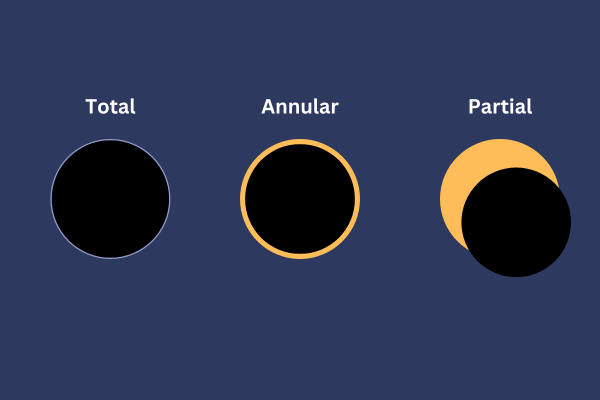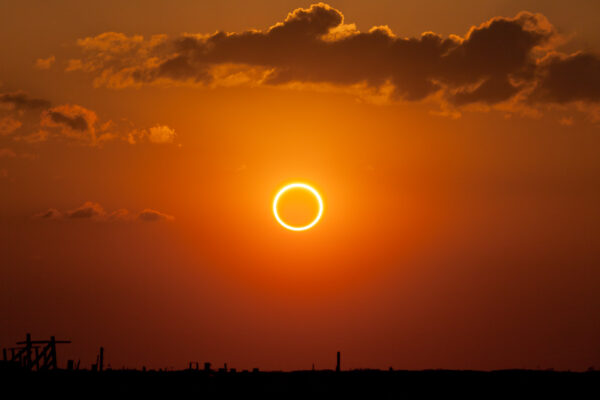A solar eclipse is set to travel over Southern Utah in October. Local residents might want to think about where they will be when the moon passes over the sun in their vicinity.
The eclipse will take place in the morning on October 14, 2023.
This eclipse is called an annular solar eclipse, meaning the moon will appear too small to cover the whole sun. Thus, it will cover only 91% of the sun’s size, leaving quite a lot of light leftover.
The event will create what is known as a “Ring of Fire” where the outside of the sun can be seen encircling the edges of the moon.

The track of the eclipse is forecast to go over both Bryce Canyon and Capitol Reef national parks, along with five state parks in the area: Kodachrome, Goblin Valley, Anasazi, Escalante Petrified Forest, and Piute. Though the solar eclipse is expected to bring extra tourism to recreational destinations across Southern Utah, some of the best places to see the eclipse will be in our own backyards.
For most towns in the area, the annularity of the eclipse will last 3-5 minutes. Exact times are found below:
Piute
| Town | Approx. Annularity Window | Duration |
| Marysvale | 10:26 a.m.-10:31 a.m. | 4 minutes, 44 seconds |
| Circleville | 10:27 a.m.-10:31 a.m. | 4 minutes, 24 seconds |
| Junction | 10:27 a.m.-10:31 a.m. | 4 minutes, 33 seconds |
| Kingston | 10:27 a.m.-10:31 a.m. | 4 minutes, 31 seconds |
Garfield
| Town | Approx. Annularity Window | Duration |
| Panguitch | 10:27 a.m.-10:30 a.m. | 3 minutes, 3 seconds |
| Antimony | 10:27 a.m.-10:31 a.m. | 4 minutes, 33 seconds |
| Bryce | 10:28 a.m.-10:31 a.m. | 3 minutes, 3 seconds |
| Tropic | 10:28 a.m.-10:31 a.m. | 3 minutes, 1 second |
| Cannonville | 10:28 a.m.-10:31 a.m. | 2 minutes, 48 seconds |
| Henrieville | 10:28 a.m.-10:31 a.m. | 2 minutes, 58 seconds |
| Escalante | 10:27 a.m.-10:32 a.m. | 4 minutes, 21 seconds |
| Boulder | 10:27 a.m.-10:32 a.m. | 4 minutes, 40 seconds |
Wayne
| Town | Approx. Annularity Window | Duration |
| Hanksville | 10:28 a.m.-10:32 a.m. | 3 minutes, 57 seconds |
| Bicknell | 10:27 a.m.-10:32 a.m. | 4 minutes, 44 seconds |
| Loa | 10:27 a.m.-10:32 a.m. | 4 minutes, 43 seconds |
| Torrey | 10:27 a.m.-10:32 a.m. | 4 minutes, 43 seconds |
| Koosharem | 10:27 a.m.-10:31 a.m. | 4 minutes, 43 seconds |
Kane
| Town | Approx. Annularity Window | Duration |
| Bullfrog | 10:28 a.m.-10:33 a.m. | 4 minutes, 42 seconds |
See this free interactive map for more specific times and locations.
– The Byway
Feature image caption: The “Ring of Fire” around an annular solar eclipse that went over Asia and the Western United States on May 20, 2012. Courtesy of Kevin Baird.

